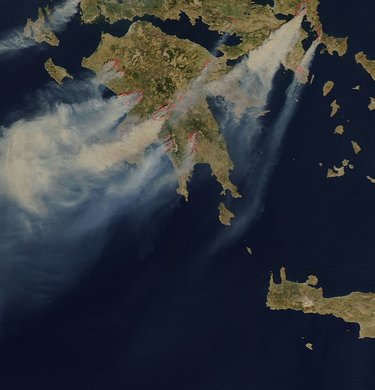Air quality advisory issued due to wildfires
Wildfires in the United States and Canada have led the state’s commissioners of health and environmental conservation to issue an air quality health advisory that runs from 10 a.m. until midnight on Tuesday across New York State.
The fine particulate matter from the fires is expected to exceed the Air Quality Index (AQI) value of 100. The AQI was created as an easy way to correlate levels of different pollutants to one scale, with a higher AQI value leading to a greater health concern.
“Due to the fact that smoke particles are small and light, they can be transported hundreds if not a few thousand miles away from their source,” AccuWeather Meteorologist Alex DaSilva explained in a notice.
With nearly 120 wildfires burning across the western United States as of Monday, at least 60 of which were considered by the U.S. Forest Service to be large and uncontained, heavy smoke enveloped parts of at least six states, according to AccuWeather. In the Northeast, as rain and humidity begin to move out, skies may remain hazy because of the particles.
Fine particulate matter consists of tiny solid particles or liquid droplets in the air that are 2.5 microns or less in diameter, according to the DEC.
Exposure can cause short-term health effects such as irritation to the eyes, nose, and throat, coughing, sneezing, runny nose, and shortness of breath, according to a release from the DEC. Exposure to elevated levels of fine particulate matter can also worsen medical conditions such as asthma and heart disease. People with heart or breathing problems, and children and the elderly may be particularly sensitive to PM 2.5.
When outdoor levels are elevated, going indoors may reduce exposure. If there are significant indoor sources of PM 2.5 (tobacco, candle or incense smoke, or fumes from cooking) levels inside may not be lower than outside. Some ways to reduce exposure are to minimize outdoor and indoor sources and avoid strenuous activities in areas where fine particle concentrations are high.
Additional information on ozone and PM 2.5 is available on DEC's website and http://www.health.ny.gov/environmental/outdoors/air/ozone.htm on DOH's website.
— Melissa Hale-Spencer


